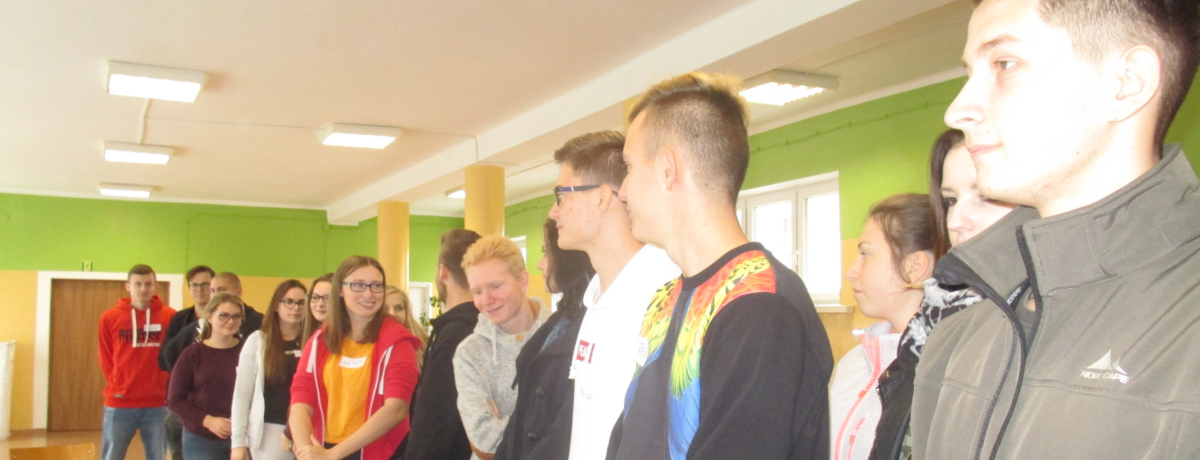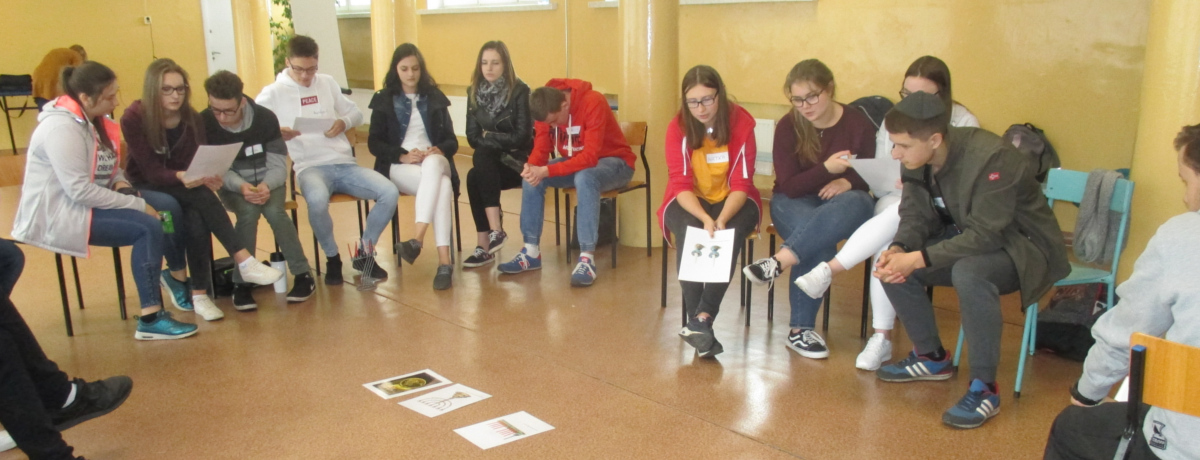| 2018 |
Trzebinia
Technical and Service-Providing Vocational School Complex


| 2018 |
Trzebinia is a town of some 20 000 residents in Lesser Poland region. First Jews settled here in the 16th century and in 1731 they obtained the right to trade freely. From 1870s onwards, local Jews had their representatives in the town’s council and up until the end of World War I the town’s mayors were almost exclusively Jewish. Trzebinia’s cultural and spiritual growth throughout the 1920s and 1930s was interrupted by the outbreak of World War II. The town became a site of prisoner-of-war and labor camps, including the so-called “gumownia” [rubbery] where military uniforms were sewn and one of the Auschwitz-Birkenau sub-camps. Throughout the occupation, Nazis would execute local Jews and deport them to the ghetto in Chrzanów. The building of the merchants’ synagogue survived the war, albeit in very poor shape, as it was used by the Nazis for woodworking. The cemetery with 248 surviving headstones and a tsaddik “ohel” was renovated in the 1980s. There are three commemorative plaques in Trzebinia: one devoted to the memory of Holocaust victims was placed in 1990 on the grounds of the Jewish cemetery; two others, commemorating the Jewish community and Poles saving Jews, were unveiled in 2016 in the synagogue building and the local church, respectively.
Twenty students from grades 2a, 3d and 4b at Trzebinia’s Technical and Service-Providing Vocational School Complex participated in the School of Dialogue with an ambitious project: their “Bridge for the Future” walking tour was augmented with an urban game. The latter had been preceded by careful preparations. Project participants took part in a number of workshops and sessions in sites including the local PTTK guide association and Urbańczyk Museum in Chrzanów. They also as met with a custodian of the town’s Jewish cemetery and held “open classes” presenting unknown facts related to Trzebinia’s Jewish history for other students in their school. They conducted a survey among their peers to establish how familiar the topic is. They sifted through books in the local libraries and asked municipality employees, editors of the local weekly “Tygodnik Ziemi Chrzanowskiej Przełom” and senior citizens for assistance in preparing the project. Their event was advertised through posters, leaflets and articles in the local newspapers. Students went so far as to create a logo for their project.

Participants in the urban game included Trzebinia’s Elementary School No.6 students with their supervisors, including a representative of Chrzanów’s PTTK tourist organization. Altogether 60 participants comprising five teams completed tasks including manual as well as word and logic games, riddles and puzzles. Each team received their own map with a route to be completed. However, “The Bridge for the Future” was intended as more than just a game: all tasks pertained to Jewish history and culture and each stop on the tour had its own guide that presented the history and archival photos related to it. The tour itinerary included, among others, the Merchants’ and Shul synagogues, “Gumownia” forced labor site, the Jewish cemetery, the cheder and the area of the former ghetto.
A symbolic award (in the shape of a diamond) and a diploma for urban game participants’ schools were presented at the end of the event.
Trzebinia’s School of Dialogue participants did more than just organize a walking tour for the School of Dialogue project; they also planned to hold it again in the spring and organize further workshops and exhibitions. Furthermore, they also composed a song to which they made a video and shot two more films: “Bridge to the Future” and a documentation of their tour. Students also petitioned the town’s mayor to commemorate sites connected to the Holocaust, including, among others, the camp “across the railroad tracks”. They want to continue to fight for the memory of their Jewish brothers.
MUSIC VIDEO: available here.

School: Technical and Service-Providing Vocational School Complex
Students: class IVb, IIId and IIa
Teacher: Monika Kasprzyk-Jedynak
Educators: Agnieszka Gwiazdowicz, Małgorzata Kruszewska
Project cofinanced thanks to the generosity of Friends of the Forum, Conference on Jewish Material Claims Against Germany and individual donors and institutions from Poland and abroad supporting Forum for Dialogue.
In appreciation to the Conference on Jewish Material Claims Against Germany (Claims Conference) for supporting the School of Dialogue educational program. Through recovering the assets of the victims of the Holocaust, the Claims Conference enables organizations around the world to provide education about the Shoah and to preserve the memory of those who perished.